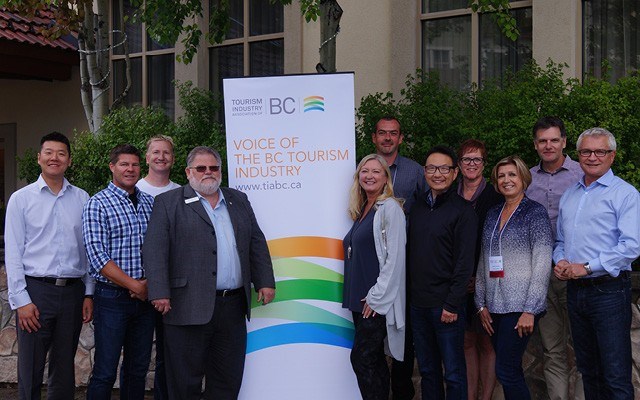As B.C.'s tourism operators gather at Sun Peaks Resort this week for the Tourism Industry Association of B.C.'s (TIABC) annual general meeting and summit, there is much to celebrate.
"We've had record years the last couple of years, and this year is shaping up to be really, really positive, and I think there's lots of good things in place," said TIABC's CEO Walt Judas ahead of the summit.
"There's good visitation from the likes of the U.S. and international markets, there's strong marketing happening at the provincial level and at the federal level... everybody is kind of on the same page." But that's not to say it's all sunshine and roses.
"There are issues to be sure, but they're not insurmountable," Judas said. "The labour one is probably the most challenging."
Resort communities and tourism operators across the province — and even in Alberta — are struggling to find staff.
"In many instances they are low skilled jobs that employers and operators are having trouble attracting Canadians to, particularly in more remote parts of the province or at the resorts," Judas said.
Contributing in part to the labour shortage is the rise of the sharing economy, which has seen large chunks of potential employee housing turn into short-term, online vacation rentals.
"I don't want to miscast it as being evil, because certainly the ability to find accommodation in small centres where there may not be enough, so that you can enjoy some of the recreation, is important," Judas said.
"But the sharing economy is also leading to some perhaps unintended consequences, including the ability to attract people to work in a community, because there is no place for people to stay."
But there are other strains on the labour pool as well.
As the number of potential youth employees gets smaller — according to stats from the provincial ministry of education, there were 60,244 Grade 12 students in B.C. in 2014-15, compared to just 44,236 in Grade 7 — employers are going to have to look elsewhere for workers, said Arlene Keis, CEO of tourism human resources firm Go2HR.
"Because that youth demographic is declining... we need to diversify looking at other labour pools," she said.
At the TIABC summit, Keis joined Destination BC CEO Marsha Walden for a talk focusing on alternative labour pools.
Keis discussed ways that employers can tap into the baby boomer labour market — 1.2 million strong in the province (about 8,600 of which reside in the Squamish-Lillooet Regional District).
"We're not going to go recruiting at seniors' homes... we're talking about teachers and government workers and police officers and military that can retire early in their 40s or 50s, who want to go and do something fun and interesting," Keis said.
"They don't necessarily care about full-time work because they've got other things to do... and they don't have to worry so much about housing, because they've already got homes in the community."
Post-retirement employment isn't for everybody, "but if there's 1.2 million boomers, even if we get two or three per cent of them, that's tens of thousands of people," Keis said.
The other "secret labour pool," as they're called, is people with disabilities, Walden said.
"There's a fantastic, smart labour pool that's available to us if we're willing to kind of broaden our perspective of what people can do," Walden said.
"And those that have gone before and employed people with disabilities have found terrific results in terms of low turnover, high loyalty... very good productivity and very low absenteeism."
There's also big potential in recruiting First Nations employees, as that demographic continues to be the fastest growing in the province.
"It's a demographic fact that we're going to have more and more challenges as the mix of people in the workforce changes, and certainly for an economy that is now the strongest in Canada, and for us in tourism leading growth in that economy, we're going to probably face more challenges than most," Walden said.
"So I think that our industry is going to have to really think creatively."
Labour and housing represent two big challenges for the tourism industry — and they're not likely to go away anytime soon as the industry continues to grow.
Tourism is forecasted to grow at a rate of about five per cent a year for the next 20 years, Walden said.
"So as we see the middle class kind of emerge out of Asian economies like China and India, those populations are going to be on the move in a way that they never have been in the past, and so that's going to buoy overall global tourism," she said.
"North America isn't predicted to grow its own domestic tourism quite as quickly as those markets, but because of what we have here in B.C. we're forecasting that we will be able to meet or exceed global growth rates."
Along with the film and high-tech industries, tourism has helped keep B.C.'s economy strong, Judas said, but if history is any indication, that could change at a moment's notice.
"We know that there will be the challenging times too. It always happens," he said.
"We need to enjoy and build on the momentum that we have now, but we recognize too that it's not possible to sustain, in some cases, double-digit growth from certain markets over the long term.
"We're well positioned because we're considered very safe, we're affordable, we're welcoming, we're tourist friendly — all those things that are deciding factors for people — but we know too that it can change in a heartbeat."




